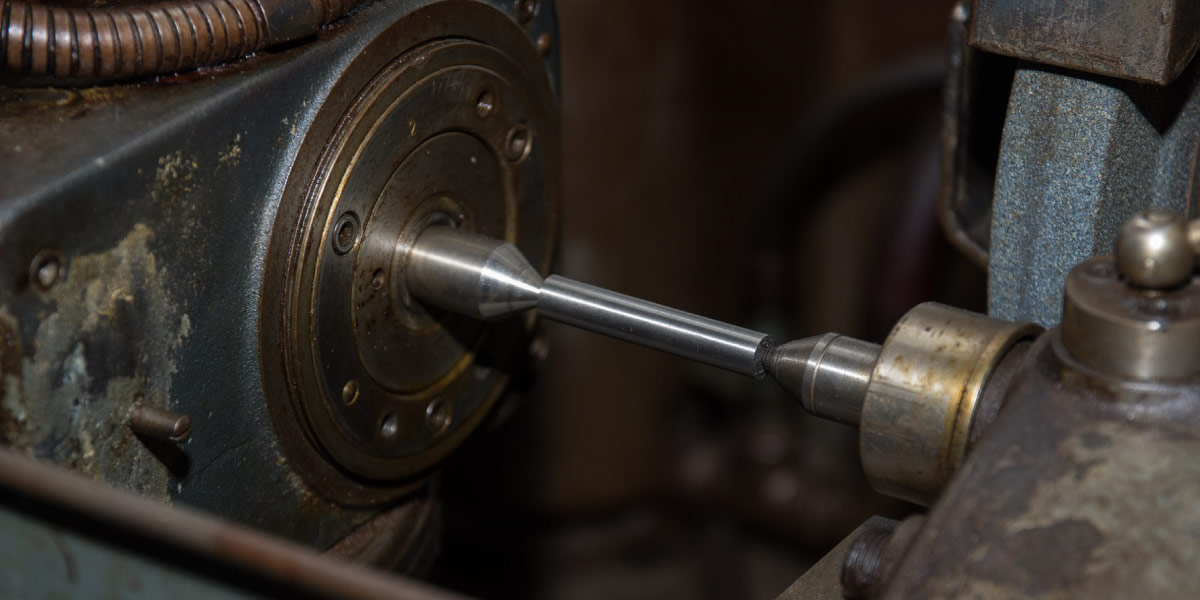Three Major Types of Grinding Operations
Within the precision grinding industry, there are a variety of methods used when parts need to be refined so that that they are within spec and will function properly. When it comes to your projects and what is needed to produce the parts you require, we want you to know how different grinding processes work so you can make the best decision possible. Let's dig in:
Click Here to Read About the History of Aerospace Manufacturing
Centerless Grinding
Centerless grinding, as likely guessed, is the opposite of centered grinding. What does that mean? Centered grinding uses a fixture or spindle to locate and secure the workpiece. Centerless grinding doesn't use this equipment; instead, the workpiece becomes the de facto center. The part is placed between two wheels, the grinding wheel and regulating wheel. The grinding wheel does just what the name implies--shaving away any excess material on the workpiece. The regulating wheel has the task of applying pressure to the workpiece to ensure that the appropriate amount of material is ground away. Both wheels spin in the same direction, causing the workpiece to spin in the opposite direction. This guarantees that the workpiece is evenly grounded creating the perfect finish and size.
Cylindrical Grinding (ID/OD)
Cylindrical grinding, appropriately, applies to crafting cylindrical parts. The principle is simple--use a cylindrical grinding apparatus to shape a cylinder. But within this technique, there are two subcategories: inside and outside diameter.
Let's start with outer diameter cylindrical grinding. When fine-tuning the outer surface of a cylinder, outside diameter (OD) grinding takes place to remove part material and imperfections. The workpiece is held between two centers which hold the piece in place and allow it to rotate. The part rotates in the same direction, which means the surfaces of the grinding wheel and the workpiece are moving in opposite directions; this not only creates the necessary friction, but also allows for smoother operation and prevents jamming.

Outside diameter (OD) grinding removes material on the outer surface of a cylinder.
Now, when forming the inner surface of a cylinder (such as a pipe or a turbine casing), the process needed to perfect the interior surface is inside diameter (ID) grinding. The grinding wheel must, therefore, be smaller than the width of the hole being ground because the wheel must fit inside the cylinder. The workpiece is held by a collet, which rotates the object in place. Unlike OD grinding, the wheel and workpiece rotate in opposite directions, creating the friction needed to refine the inner surface.
Surface Grinding
Surface grinding, unsurprisingly, is the process of grinding the surface of a workpiece--removing material or excess substances from the workpiece--leaving behind a flat and smooth face. The surface grinding process was created specifically to help manufacturers achieve tight tolerances and smooth finishes. There are a few surface grinding methods: horizontal- and vertical-spindle, vertical-spindle rotary grinding, horizontal spindle single disk, and vertical swivel head grinding.
The workpiece is secured to a device which both holds it in place and moves it across the spinning grinding wheel. The wheel is stationary as it creates an even, flat finish. Different grit counts on the wheel and the amount of time it is grinding on the workpiece causes different finishes--higher grit and longer worktime yields a higher quality finish.
Precise grinding is a complicated process requiring a trained and skilled hand--so when it comes to your parts and ensuring they meet spec and performing to the high level you and your customers demand, making the right choice is crucial. If you have questions about which grinding process your parts require -- centerless, cylindrical, surface, or any other precision grinding process -- drop us a line. We are happy to help.










